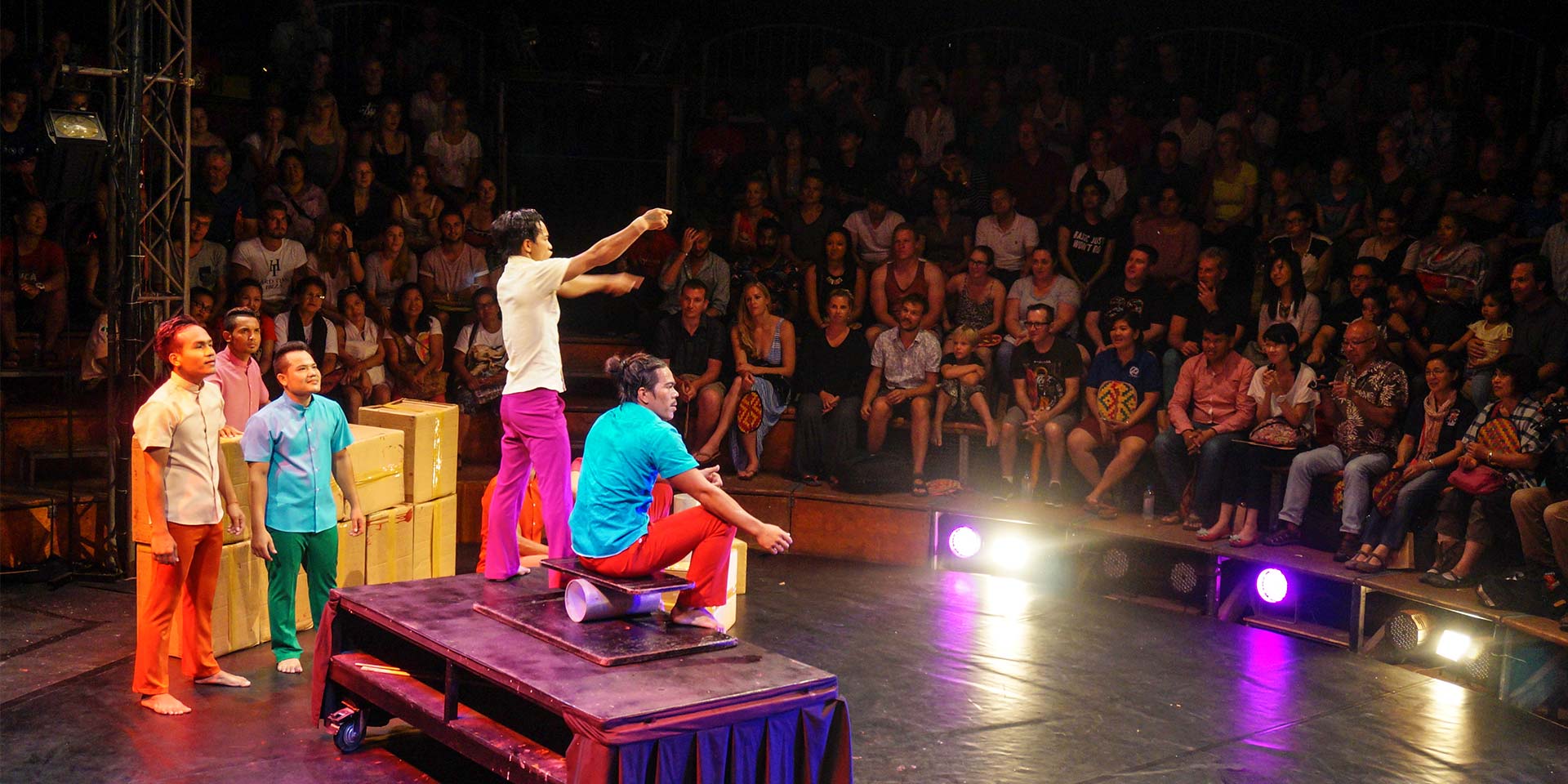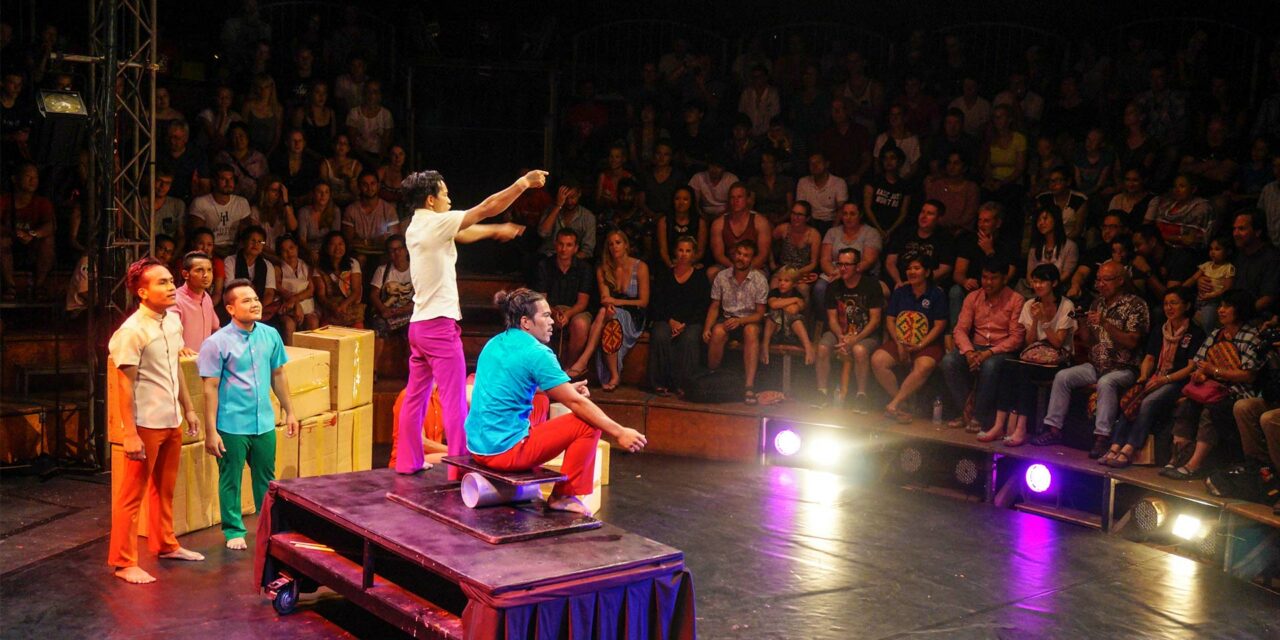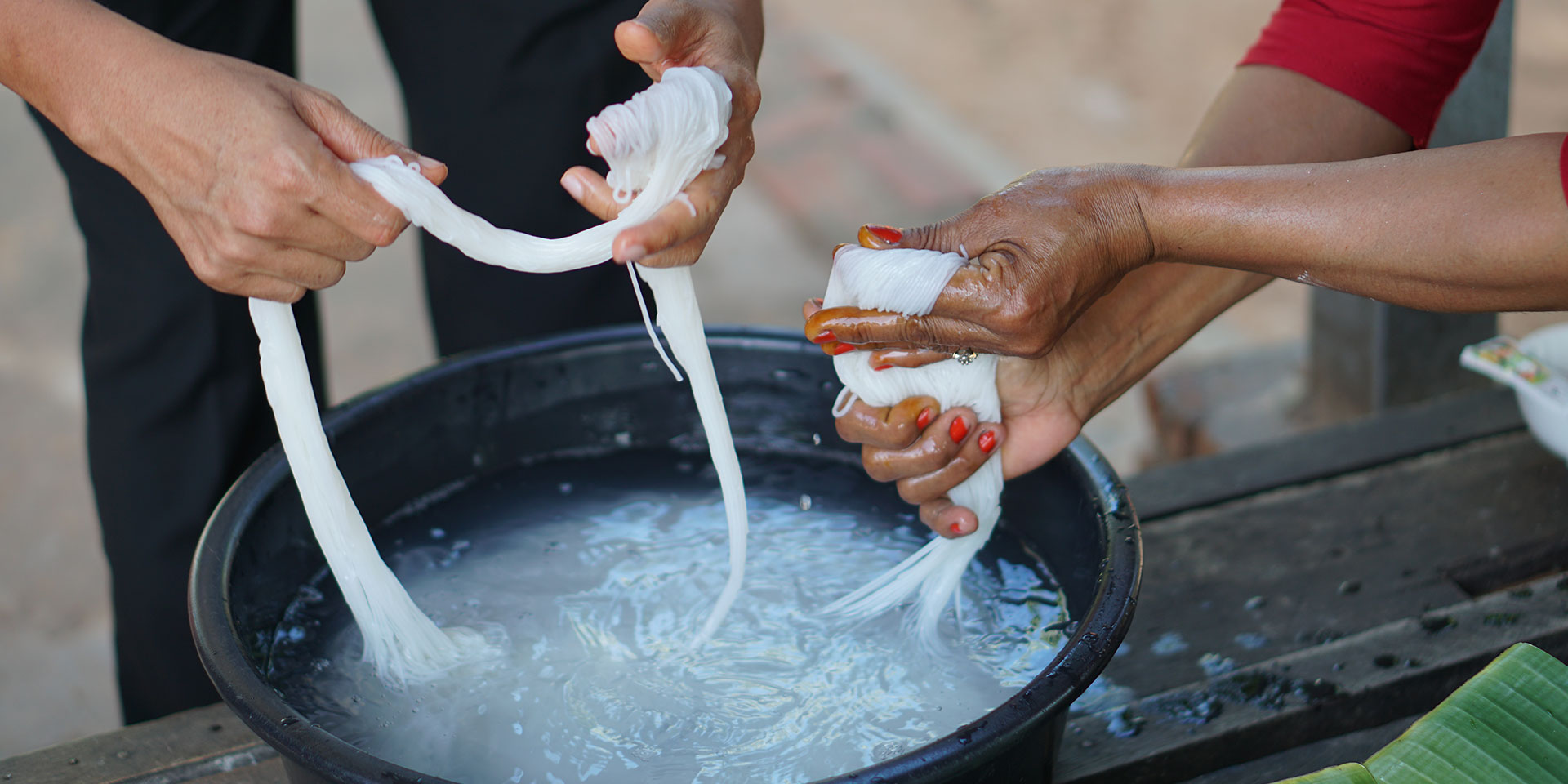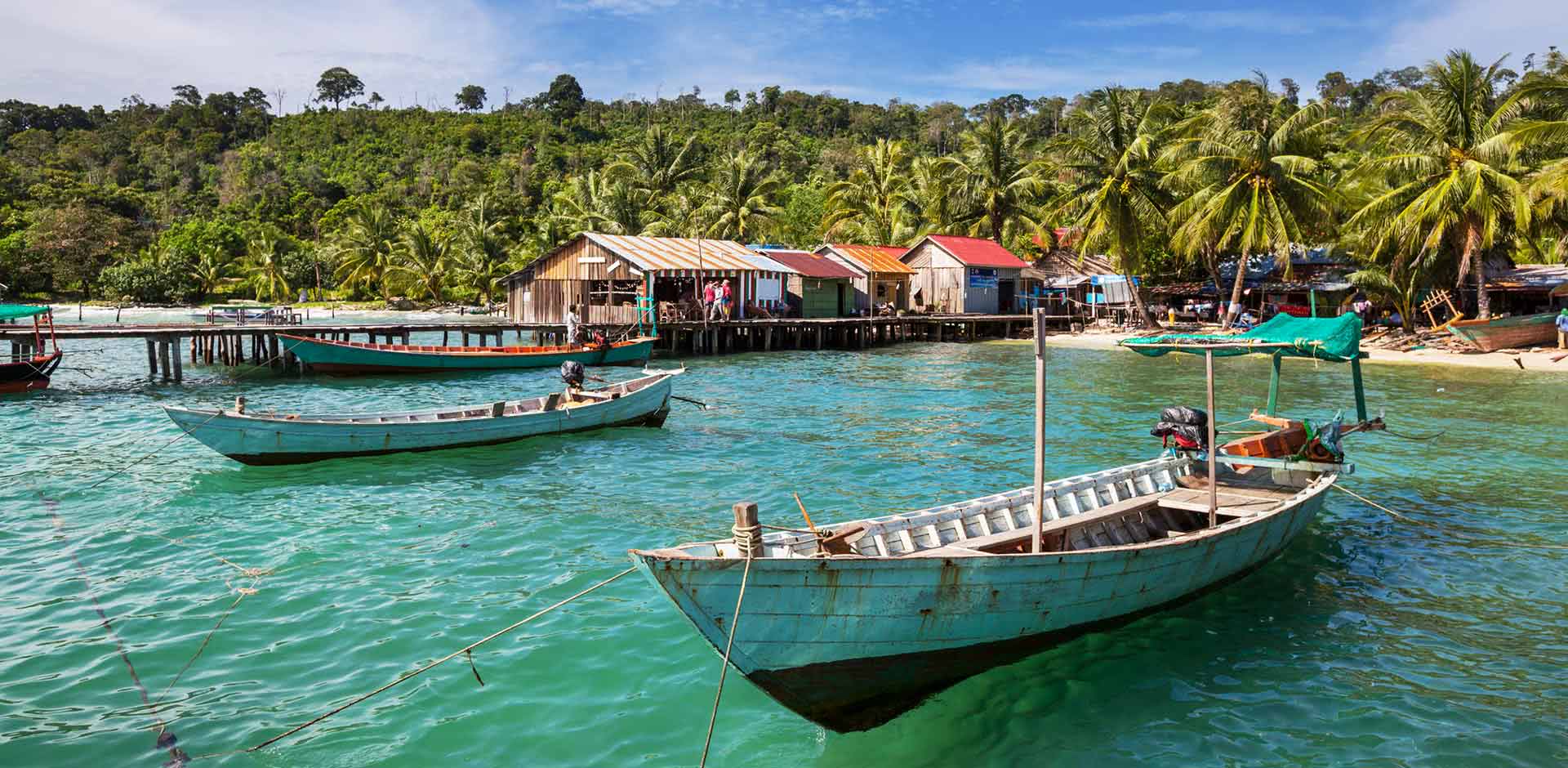More than 450 People hold their breath as they look on while the performers of Phare engage in feats of acrobatics and storytelling. Other than Angkor Wat, the Phare, The Cambodian Circus is the must-see sight in Siem Reap. It’s in all the guidebooks. It’s seen by ultra-luxe and itinerants alike. Few activities sum up the new and the old of this Cambodian city quite like the Phare.
“The artists create the stories themselves based on their own life experiences, drawing from recent Cambodian history, folklore, and modern society,” says Craig Dodge who works with the Phare.
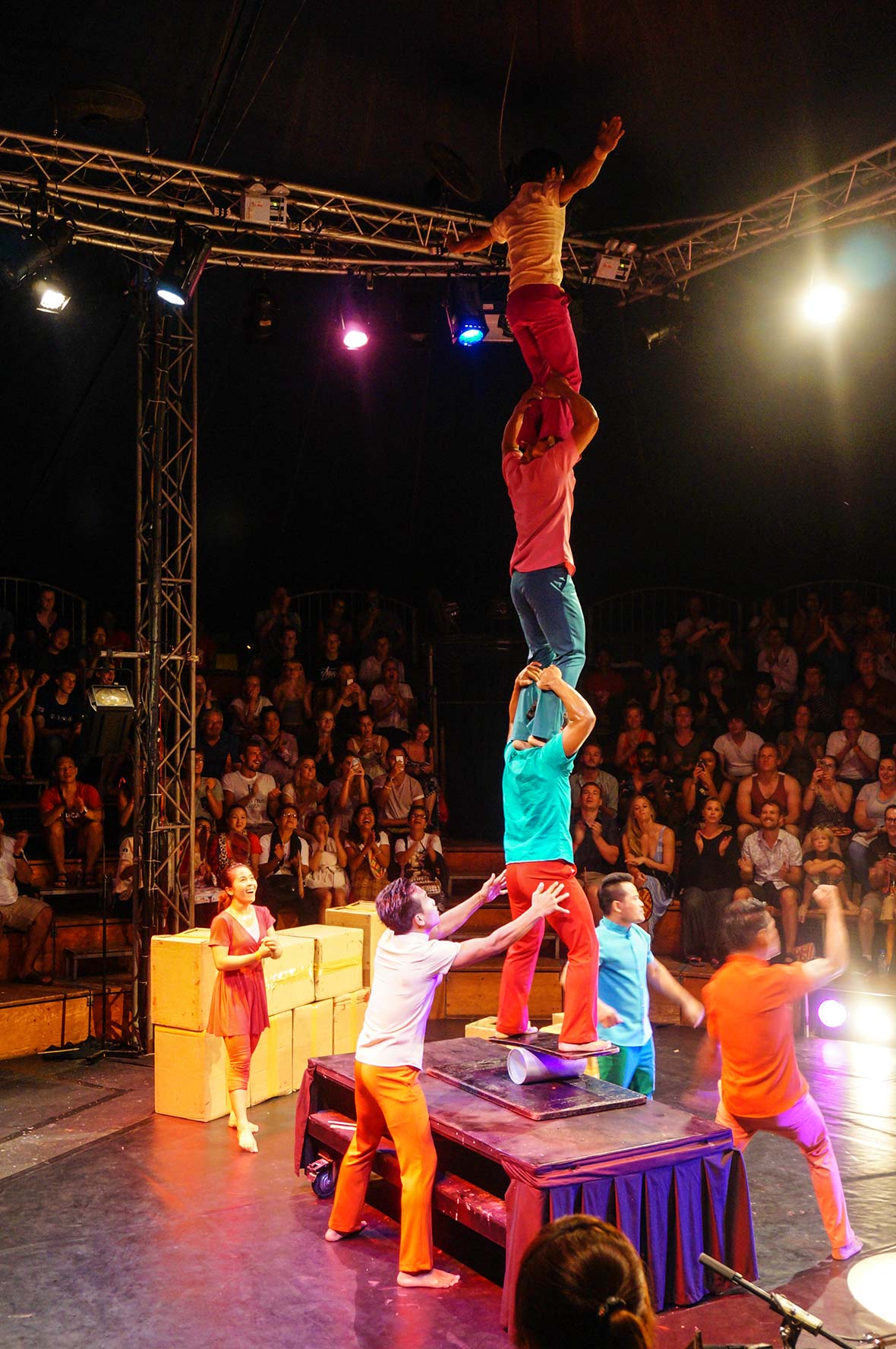
ABOVE: Performers at the Phare.
Stone carvings in ruins around the country attest to the importance of the circus arts throughout the country’s history. However, sadly, during the 20th century many of these skills were lost as intellectuals and artists were targeted in the turbulent history of the Kingdom, with all performances of almost any kind banned during the Khmer Rouge.
In 1994, after returning home from camps near the Thai border, nine refugees in collaboration with their French art therapy teacher set out to bring back these nearly forgotten arts. They founded Phare Ponleu Selpak – which translates to ‘Brightness of the Arts’. The school focuses on empowering impoverished children through the arts.
In 2013 the school opened its big top tent in Siem Reap for nightly performances. Phare Production International offer private performances in Cambodia and abroad.
Local artists enthral spectators every night as they combine their talents with local music and tales that depict Cambodian culture and society and the lives (and struggles) of Cambodians – both traditional and contemporary. Themes include war, discrimination, relationships, poverty, and spirits.
Shows held by Phare, The Cambodian Circus are based on the experiences of the creators and performers.
Through their performances the artists share parts of their culture with the audiences in a baroque act of movement and song; they connect with their audience and invite guests to join them on stage after each performance.
ABOVE: White Gold trailer.
While providing guests with riveting performances, the Phare offers the artists an opportunity to transform their lives. “You would never imagine from what you see on stage, the challenging social and economic circumstances from which they come,” Craig says. He believes that Phare has offered the performers a way to “break the cycle of poverty.”
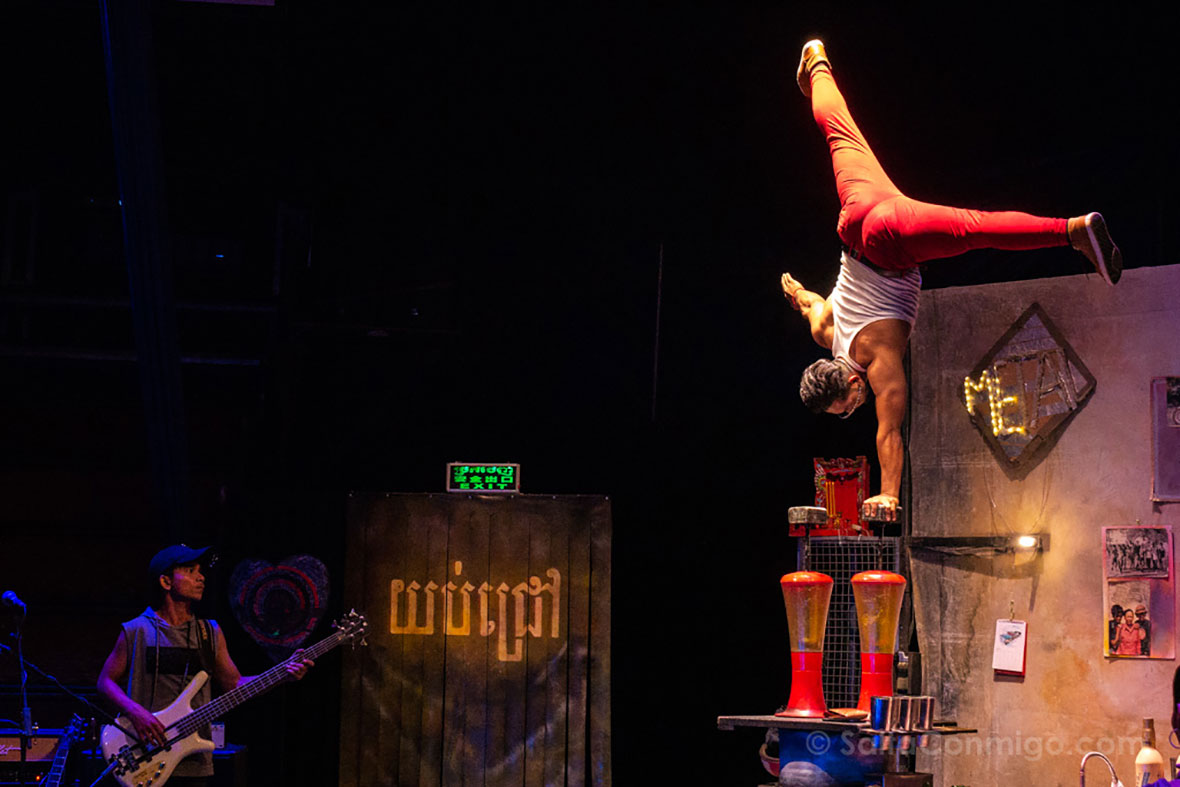
ABOVE: “Khmer Metal” at the Phare.
Different nights tell different stories. “Eclipse,” for example, is based on a folktale that tells the story of a disfigured young man from a rural village in Cambodia. After being rejected by the community, the man asks the gods for help and is transformed into a beautiful young woman. Though the woman attracts the admiration of many of the village men, a mysterious plague befalls the village and the villagers begin to realize something is wrong.
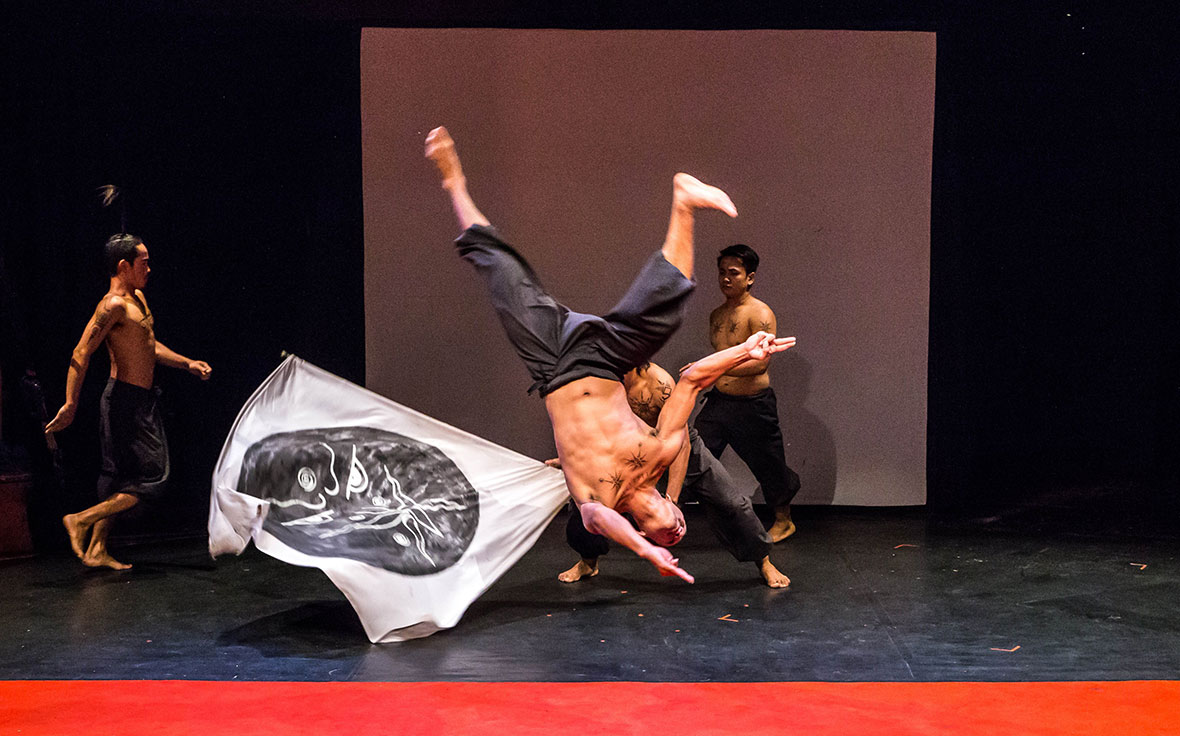
Other pieces, such as “Influence,” are more conceptual, in which primordial organisms struggle through prehistoric jungles to an ancient king who is manipulated by forces outside of his control. On a lighter theme, “Same Same but Different” illustrates the differences in habits and ways of living between Cambodians and foreign visitors. The “Khmer Metal” nights follow the owner of a rock bar in Phnom Penh for a look at modern Cambodia. “White Gold,” on the other hand is about rice, Buddhism and the needs of contemporary society.
The playbill for the Phare is forever changing with new acts and themes. The Phare Boutique offers locally made handicrafts, original artwork, and mementos from the circus to those who attend, and those wanting to duck in and hide from the tarantulas on sticks outside can hop in the Phare Café, which opens two hours before show time to serve cold drinks, cocktails, light snacks, and dinner.
“Guests at Phare, The Cambodian Circus enjoy Siem Reap’s most authentic, unique, top-rated entertainment with the added satisfaction that their money is going to a good cause,” Craig says.

